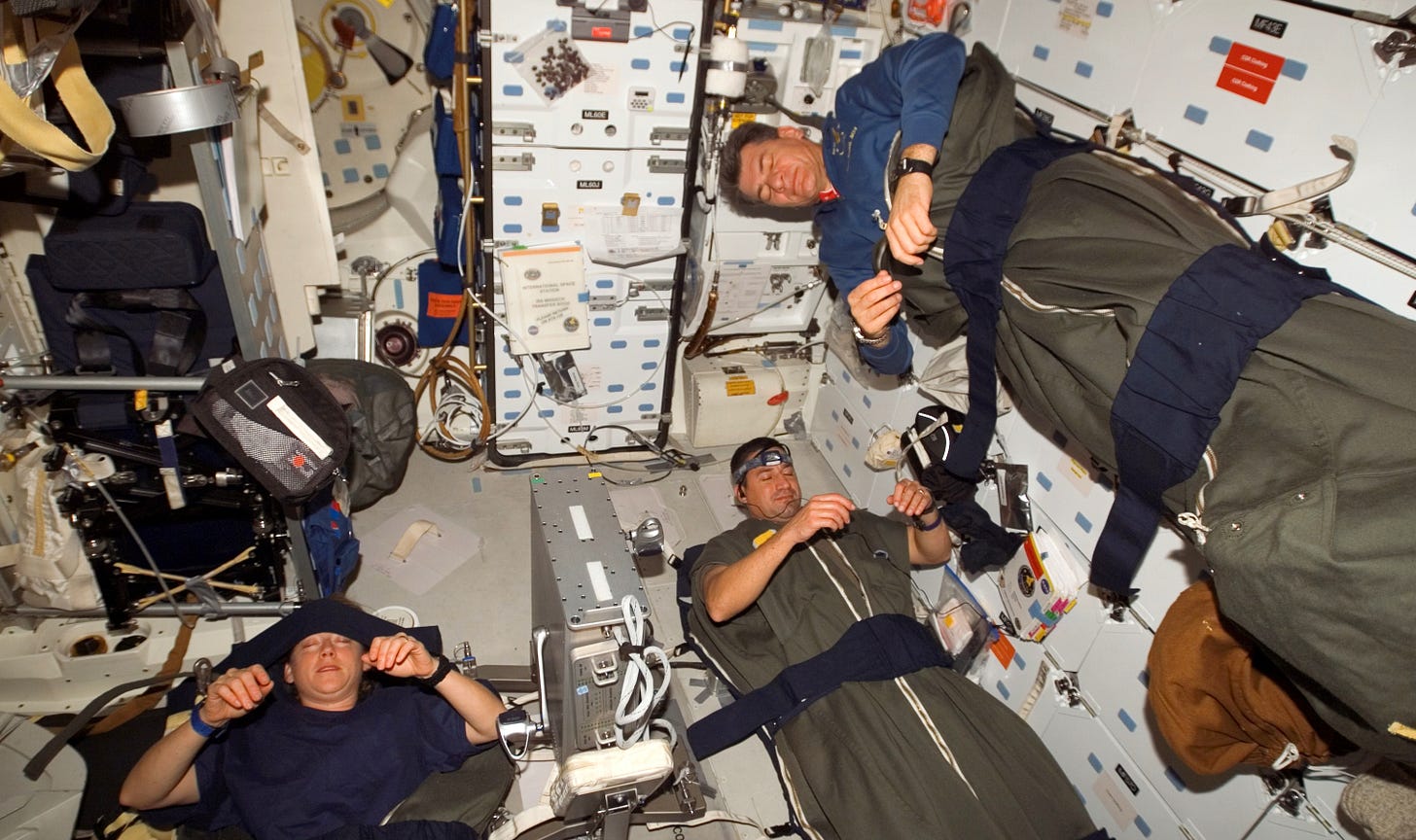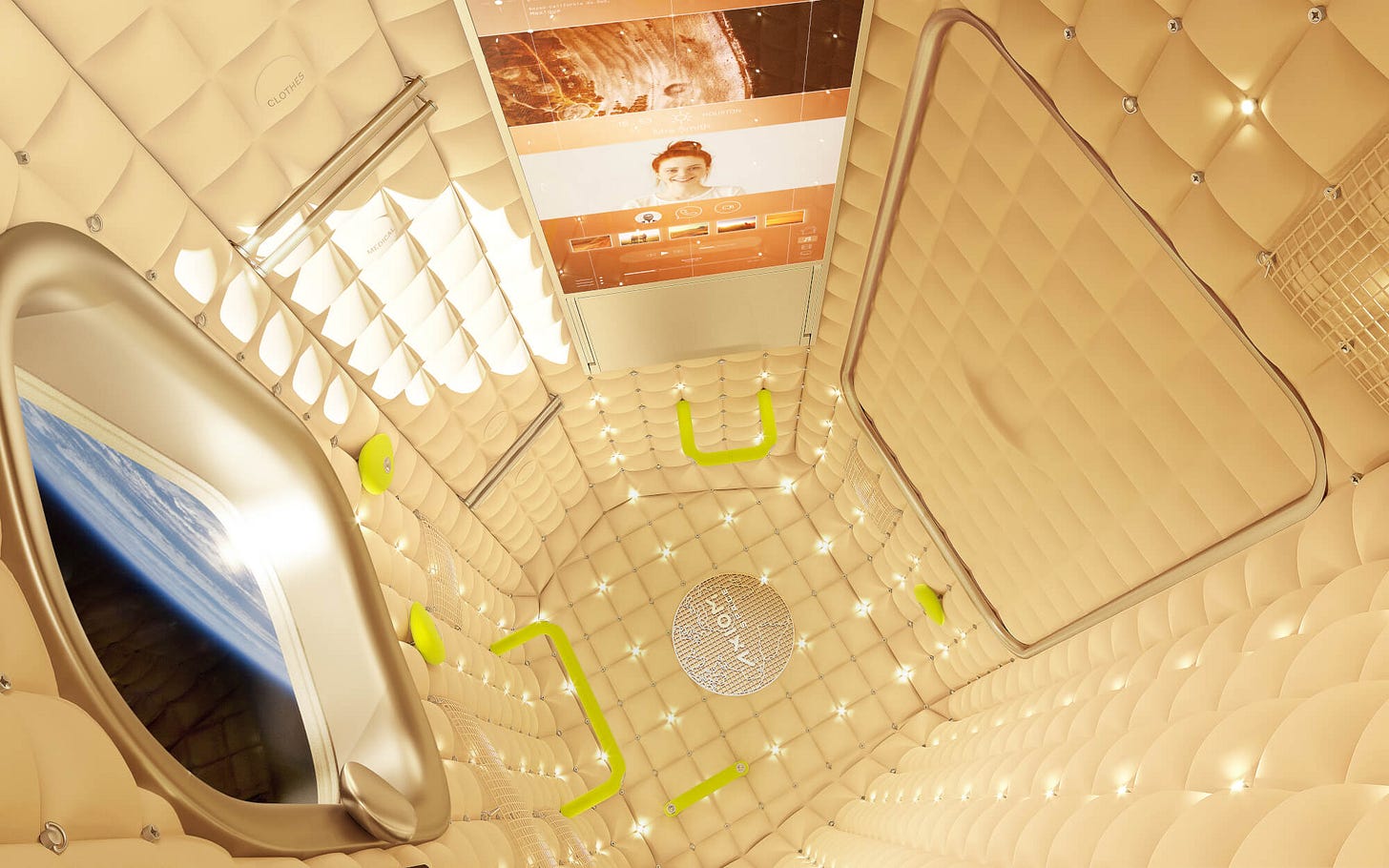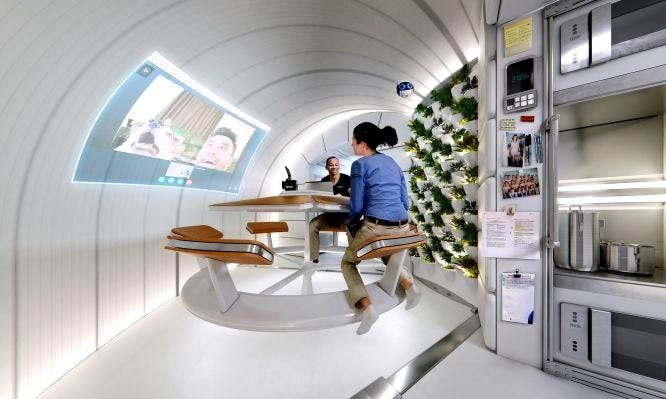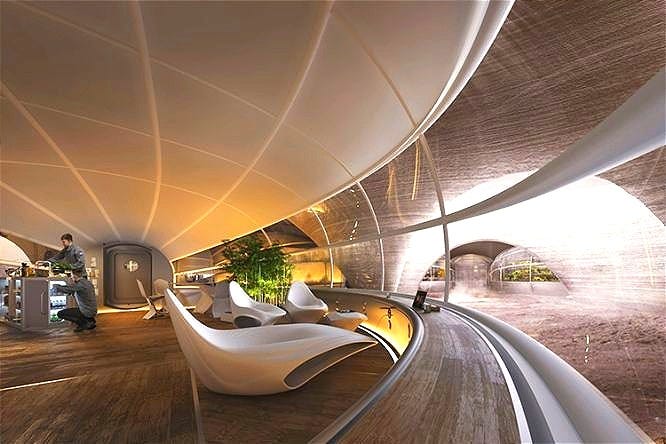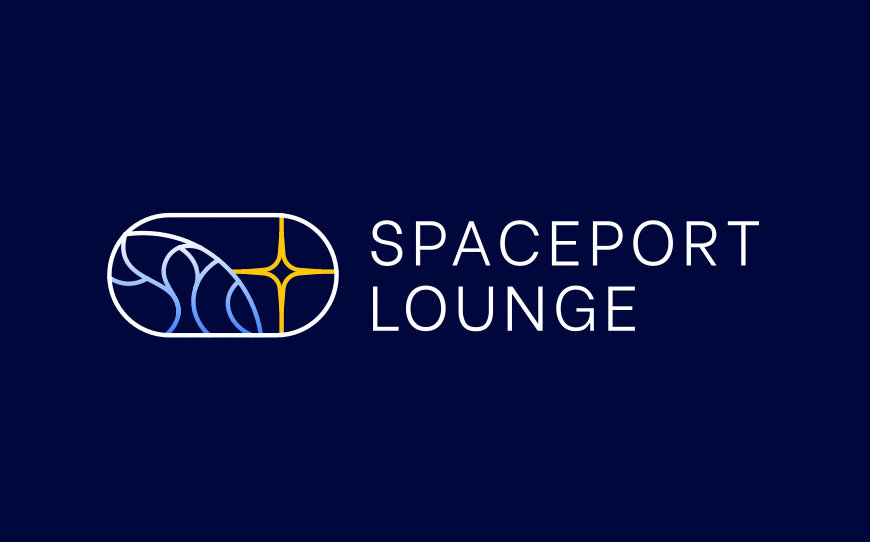
Space travel has historically been driven by engineering necessity and safety. Yet as government agencies, private companies, and tourists increasingly share the experience, the need for improved sleep quality and more comfortable quarters is evolving.
In the hospitality world, beds and room space are a foundation of the experience. Comfort, privacy, functionality, amenities, views, and the promise of repose define value and the same expectations are beginning to take hold in orbit. We explore what a night’s sleep looks like in space today and how designers are reshaping it for tomorrow’s spacefarers.
Current Sleeping Facilities
International Space Station
On the ISS, long-duration astronauts typically use private crew quarters, small booths about the size of a phone booth, each with a sleeping bag, ventilation ducts, a light, a laptop, and room for personal mementos. There are four booths in the U.S. Harmony module and two more in the Russian Zvezda module, giving the station six permanent cabins. When the crew is at six, everyone can sleep in a booth.
The ISS often hosts more, especially during crew rotations or visiting missions. Short-term residents such arriving crews during handovers sleep in tethered bags attached to the walls of other modules. Privacy is minimal in those cases, and the experience resembles what early ISS astronauts endured before private quarters were installed.
Chinese Space Station (Tiangong)
Tiangong offers six individual crew berths. Just built in the past few years, it appears sleeker and more modern than the decades-old ISS. It boasts integrated storage, personal lighting, and a minimalist finish reminiscent of Tokyo’s capsule hotels. Each berth is compact yet private, with attention paid to both aesthetics and function.
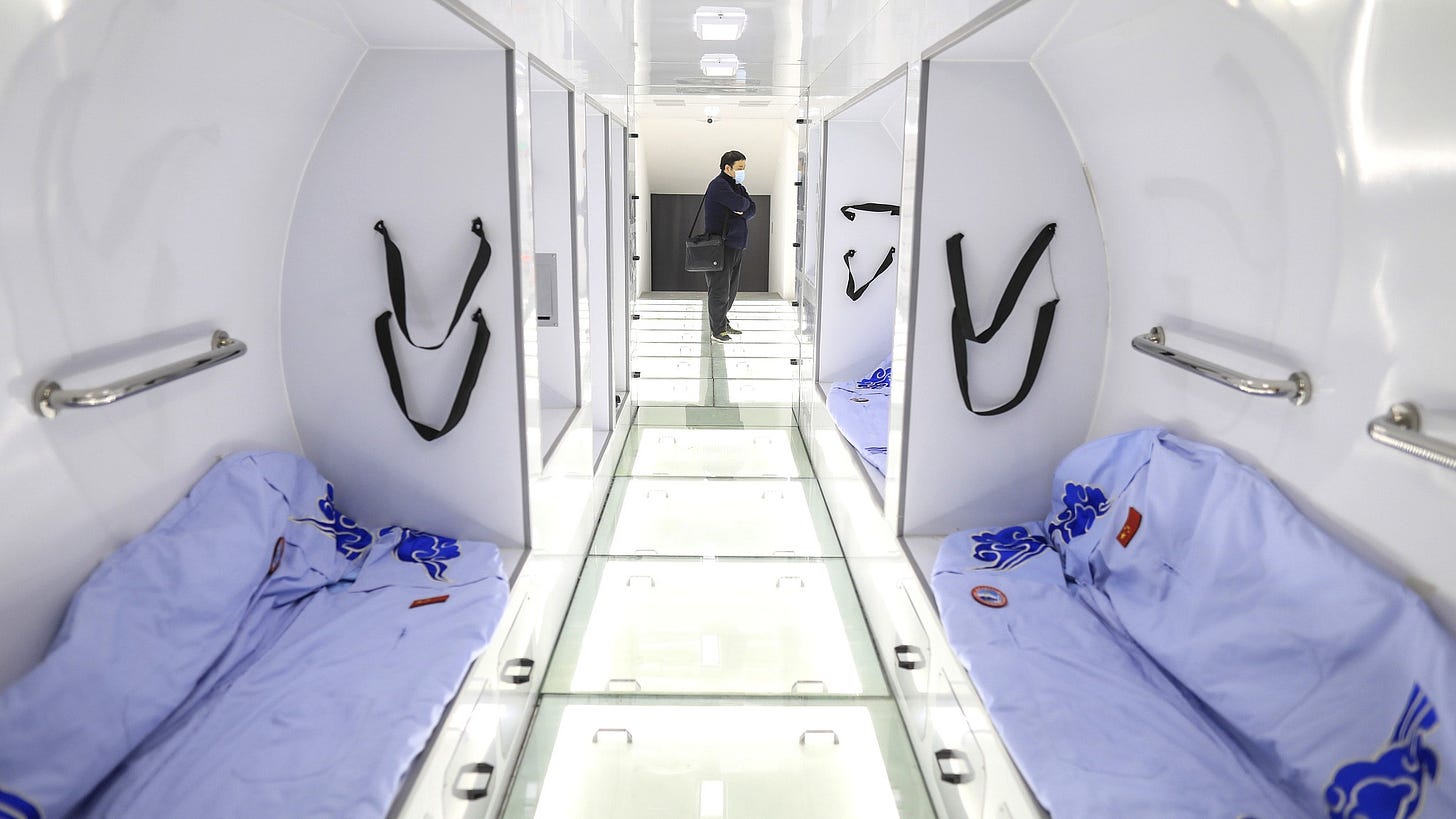
SpaceX Orbital Missions
Crew Dragon capsules, used for ISS transport and private orbital trips, offer no separate sleeping quarters. Astronauts sleep where they sit, reclining in their seats, or zip into lightweight bags tethered to the capsule’s interior walls. Lighting can be dimmed, but there is almost no privacy, with four people inside a volume not much bigger than an SUV.
The Challenges of Sleep in Orbit
Sleep in space is shaped by four constant realities. The first is the light cycle. Astronauts see a sunrise or sunset every 90 minutes, disrupting circadian rhythms. Even with LEDs dimmed for night periods, one in five sleep sessions on the ISS is misaligned with natural body clocks.
The second is noise and vibration. Fans and pumps run continuously, creating background noise that earplugs only partly muffle.
The third is airflow. In microgravity, exhaled carbon dioxide lingers, so each cabin needs a steady stream of ventilation near the head. Poor airflow can leave astronauts groggy or at risk of CO₂ buildup.
The fourth is privacy. Astronauts work, eat, and exercise within meters of one another for months at a time. The ability to retreat to a private berth, however small, remains one of the most valuable design features of modern stations.
Near-Future Accommodations
Several companies are now designing habitats that improve the sleep experience.
Axiom Space: Its first habitat module, Hab-1, scheduled to launch later this decade, will feature four private crew quarters. Thales Alenia Space is building the module, while French designer Philippe Starck is shaping the interiors with an emphasis on comfort, lighting, and aesthetics alongside improved volume, airflow, and controls.
Starlab: A joint project by Voyager Space and Airbus, with Hilton tapped to help design interiors, Starlab is explicitly borrowing from hospitality. Its sleeping quarters and shared living areas are being shaped with attention to lighting, materials, and human comfort
Orbital Reef: Blue Origin and Sierra Space envision Orbital Reef as a multi-use commercial station. Sierra Space’s inflatable LIFE habitat provides multi-deck living space, with dedicated sleeping and hygiene areas. The scale allows designers to build quiet neighborhoods, moving crew away from noisy equipment bays.
Vast (Haven-1): Marketed as the first small commercial station, Vast has unveiled concepts for private sleeping quarters and even a patent-pending sleep system. Its compact scale emphasizes comfort within a minimalist footprint, while promising a more human-centered interior than earlier capsules.
Across these projects, common themes stand out: more volume per person, better acoustic insulation, personalized airflow, and tunable lighting that supports circadian health.
Longer-Term Concepts
Designers are exploring concepts that could redefine sleep in space. In the next decade, circadian-aware cabins with adaptive lighting are expected to become standard, and multipurpose pods shielded by water or storage could double as storm shelters.
Over the following decades, researchers envision short-radius centrifuge pods to provide nightly artificial gravity, inflatable habitats with acoustically separated cabin rows, and biophilic features such as virtual windows or natural soundscapes.
For deep-space missions, hibernation-style capsules could help save supplies, while dorms built under layers of lunar or Martian soil could shelter crews on the surface.
Balancing Comfort and Constraints
Fifty years ago, Skylab astronauts slept in hammocks, surrounded by rattling machinery. Today, astronauts enjoy private phone-booth cabins on the ISS, and taikonauts in Tiangong rest in more refined berths.
Future space travelers, whether government scientists, corporate researchers, or private tourists, will push for something closer to a hotel room than a basic pod. Just as hotel guests here pay extra for space, views, and privacy, orbital travelers will value similar upgrades in their space travel quarters, where real estate is even more scarce and costly.
The question is when such comforts can be built into stations, given the constraints of volume and expense that define space construction.




